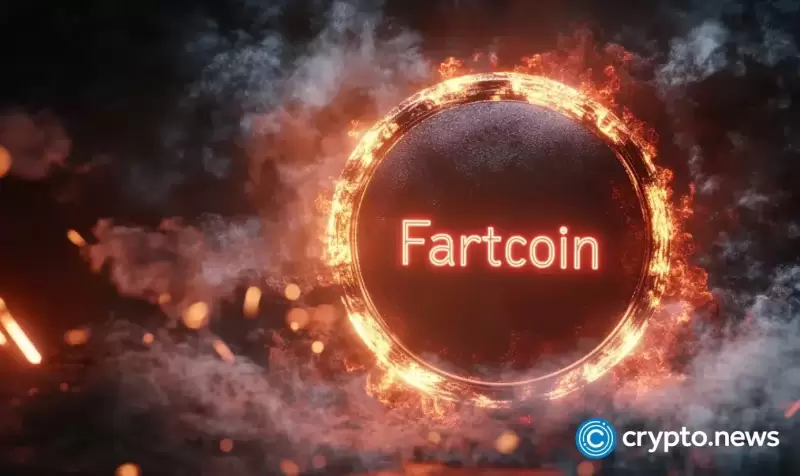 |
|
 |
|
 |
|
 |
|
 |
|
 |
|
 |
|
 |
|
 |
|
 |
|
 |
|
 |
|
 |
|
 |
|
 |
|
Cryptocurrency News Articles
Polygon Labs CEO Marc Boiron calls for a fundamental shift in how DeFi protocols manage liquidity
Apr 25, 2025 at 05:44 pm
In an exclusive interview, Boiron outlined Polygon's vision for sustainable DeFi, emphasizing chain-owned liquidity and transparent economic models as the path forward.
Polygon Labs CEO Marc Boiron has called for a fundamental shift in how decentralized finance (DeFi) protocols manage liquidity, labeling the sector’s ongoing liquidity crisis as “self-inflicted.”
In an exclusive interview with Cointelegraph, Boiron outlined Polygon’s vision for sustainable DeFi, highlighting chain-owned liquidity and transparent economic models as crucial.
Critiquing DeFi protocols for fueling a cycle of “mercenary capital,” Boiron highlighted the use of annual percentage yields (APYs) through token emissions to attract liquidity.
“It’s just renting liquidity; it’s not real loyalty,” said Boiron, adding that such strategies lead to fleeting liquidity, which vanishes when yields decrease or token prices falter. This dependence on short-term hype, he argued, hinders the sector’s stability and deters complete institutional adoption.
“We need to break that cycle and start thinking about how to build models where liquidity sticks around for the right reasons,” explained Boiron, suggesting Polygon’s POL token as a blueprint for this approach.
This vision centers on chain-owned liquidity, where protocols build treasuries to directly hold liquidity positions, distinct from lending institutions or decentralized exchanges (DEXs). Unlike token emissions, which Boiron described as having "pros and cons," with the potential for fast liquidity acquisition but also token value dilution, owned liquidity offers substantial capital efficiency and long-term stability.
The only trade-off in the plan is time, as capturing fees, bond mechanisms, or limited emissions are required to build up a treasury.
For traditional finance (TradFi), liquidity stability and predictability are prerequisites for full DeFi adoption.
However, Boiron noted that these solutions are not just for institutions, as they align with broader outlooks on sustainable DeFi.
“These are good financial fundamentals that work for any protocol,” he said, adding that suggestions of Polygon’s strategy being too narrow to address DeFi’s broader issues are irrelevant.
As Polygon pushes for a DeFi reset, Boiron expressed optimism about getting support from frameworks like Europe’s Markets in Crypto-Assets Regulation and evolving U.S. guidance.
“I think we are 12-18 months away from seeing a lot more institutional involvement in the space,” he predicted.
Looking to 2026, Boiron envisions a more stable DeFi ecosystem with less volatility, stronger community governance, and sophisticated financial products bridging TradFi and real-world assets. He highlighted how POL could reduce reliance on mercenary capital, fostering truer decentralization.
Boiron added that POL is the foundation for long-term growth, as it helps protocols focus on building better products and keeping users engaged, instead of constantly needing to plug liquidity gaps or dilute tokens to stay afloat.
“We want to see protocols build great products, not get into a vicious cycle where they are constantly battling to stay alive,” he said.
Boiron’s core message to DeFi protocols is clear: “Sustainable economics always win in the long run.” While market pressures make it tempting to chase high APYs, he noted that surviving protocols from past cycles, such as MakerDAO (MKR) and Aave (AAVE), demonstrate the value of sustainability.
“More teams are starting to get it,” said Boiron, urging the ecosystem to adopt models that prioritize long-term growth over fleeting buzz.
See original on CCIV
Disclaimer:info@kdj.com
The information provided is not trading advice. kdj.com does not assume any responsibility for any investments made based on the information provided in this article. Cryptocurrencies are highly volatile and it is highly recommended that you invest with caution after thorough research!
If you believe that the content used on this website infringes your copyright, please contact us immediately (info@kdj.com) and we will delete it promptly.
-

-

- Fartcoin (FARTCOIN) Approaches a Major Inflection Zone
- Apr 26, 2025 at 02:35 am
- Fartcoin has approached a major inflection zone after completing a potential Elliott Wave structure. The token’s recent price action suggests a shift in market dynamics, and traders are watching closely for signs of a larger corrective move.
-

- Trump Coin (TRUMP) Has Soared Impressively, Capturing the Attention of Both Crypto Speculators and Meme Coin Enthusiasts.
- Apr 26, 2025 at 02:30 am
- Trump Coin has soared impressively in the past week, capturing the attention of both crypto speculators and meme coin enthusiasts. This rapid growth has prompted fresh interest in meme coins, especially new presales that offer innovative features beyond hype. By Cointelegraph.
-

-

-

- Trump Coin (TRUMP) Recently Surged with an Aggressive Impulsive Rally, but Signs Now Point to a Potential Local Top
- Apr 26, 2025 at 02:25 am
- Trump Coin (TRUMP) has experienced a powerful upward surge, but current technical conditions show early signs that the rally may have reached an exhaustion point.
-

-

-




























































